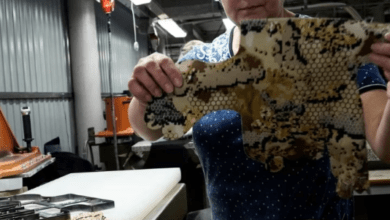Mastering Material Handling Operations in Manufacturing Facilities
The lifeblood of manufacturing depends on efficient material handling – the transportation, storage, and control of raw goods and products throughout facilities. Yet as volumes, variety, and production goals intensify, smooth manual material movement becomes improbable. Introducing well-planned material handling systems and equipment provides the strategic backbone needed to scale efficiently.
How to elevate your material handling operations in Australia? Explore considerations around structuring seamless material handling operations to meet the throughput demands of high-performing plants.
Table of Contents
Assessing Material Workflow Fundamentals First
Whether expanding factories or improving existing buildings, reevaluating material handling capabilities starts by understanding workflow basics:
– Inputs/Outputs: Define types and volumes of raw goods needing inbound transport and finished product outbound needs.
– Processing Stages: Map sequential operational steps from delivery to storage to production line to packaging stations to outbound shipping.
– Workzone Requirements: Determine equipment, shelf space, supply access, and worker needs across zones.
– Traffic Patterns: Analyze ideal material routing through the plant and potential bottleneck zones.
This overview spotlights functional gaps to address through systems enhancements or layout changes before suboptimal movement compensations cement.
Selecting Structural Systems to Seamlessly Transport Materials
Structural systems provide major arteries for moving bulk goods efficiently through buildings to streamline cross-functional workflows. Dedicated material handling equipment options include:
– Automated Guided Carts: Programmable to follow floor-integrated wires or sensor strips between destinations like loading docks, storage, production zones, and shipping.
– Conveyors: Roller, belt, tow line, and robotic arms transport high volumes quickly.
– Monorails + Overhead Trolleys: Enables flexible part-to-part movement.
– Lift Systems: Scissor lifts, articulated lifts, and mezzanine lifts move input and output inventory vertically between floors.
– Automated Storage and Retrieval Systems (ASRS): Use computerized shuttles and lifts to mechanically store and access items in dense vertical spaces.
Integrating even semi-automated systems to handle predictable bulk and repetitive material flows allows factories to redeploy staff to more value-added roles.
Complementing with Modular Mobile Material Handling Equipment
Even with major systems in place, executing essential last-mile movements of tools, supplies, custom orders, and delicate materials relies on select manual options tailored around flexibility.
– Carts + Lifts: Configurable shelves transport batch ingredients, components, and kits directly to production lines.
– Manipulators + Vacuum Lifts: Enable precise positioning of items too heavy, slippery, or unwieldy manually.
– Scissor Lift Tables: Adjust working heights to prevent bending and musculoskeletal injuries while handling materials.
– Modular Workstations: Customizable storage, hooks, bins, and boards locate necessary items exactly where needed.
Purposeful mobile solutions filling niche needs empower staff productivity and well-being around final assembly and fulfillment.
Reimagine Material Flows to Unlock New Potential
Rather than leaving material transport to chance or status quo arrangements, manufacturers realizing 20% throughput gains reengineer buildings and processes deliberately around seamless goods movement.
From big-picture flow planning to nuanced mobile support tools, material handling informs strategic decisions. Partnering with specialists to assess needs and integrate purpose-built solutions sets factories up for flexible, injury-free, optimized material operations as the backbone of expansion initiatives.






